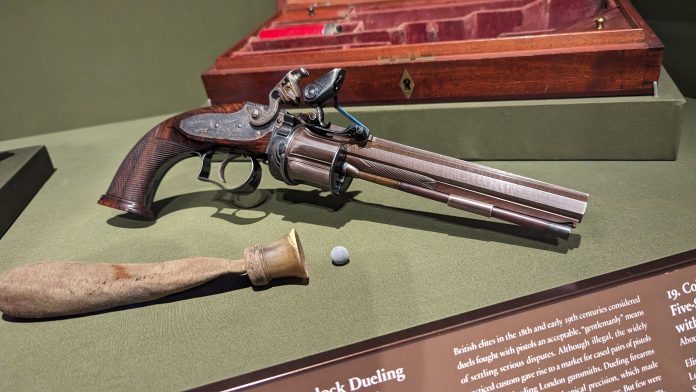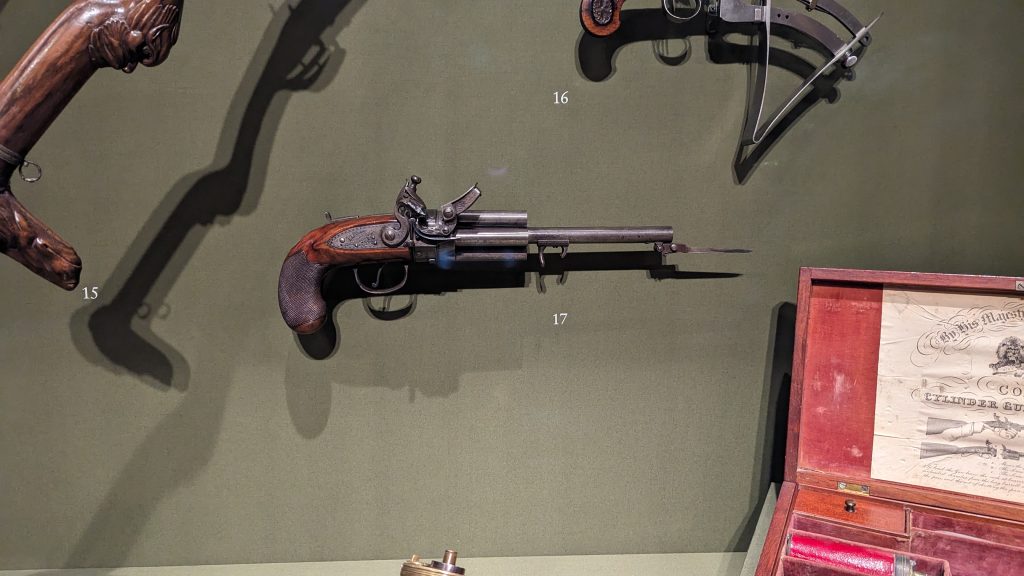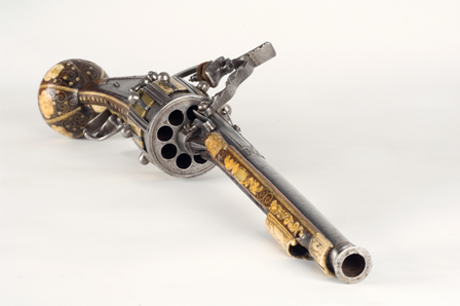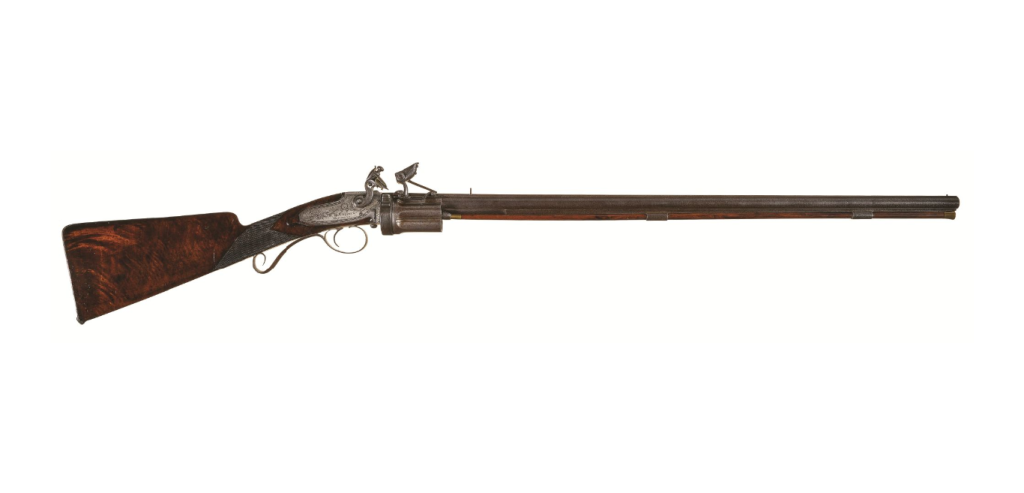
Who says art museums are lame? On a recent vacation to Chicago, my wife and I saw their massive art museum. She is artistically inclined and was quite excited to see this massive museum. They had an arms and armor section that spiced it up for me, especially when I ran across a few flintlock revolvers. I have probably heard of flintlock revolvers before, but seeing them was quite interesting and sent me on a quest to learn a bit more. I guess the museum did its job.
Flintlock rifles and handguns were a bit of a game changer. They were a good bit simpler than wheellock and matchlock firearms and could be fired faster than either. They became the dominant arm of most military forces rather quickly. While they may have been faster than the competition, they still had to deal with the impatience of one man trying to kill another. How can you make flintlock faster?

Adding a second barrel was an option, but that made the weapon fairly heavy with the benefit of one more shot. Adding a cylinder gave you multiple shots without the weight. However, that didn’t discount multiple barrels altogether, and flintlock pistols in the pepperbox format were known to exist. However, we are going to stick to revolving flintlocks with a more traditional cylinder and single-barrel format.
The World of Flintlock Revolvers
The earliest revolving flintlock appears to have been produced in Germany. This 9-shot revolver was built for and carried by Norwegian General George von Reichwein and currently sits in the Maihaugen Museum in Norway. It’s believed to have been produced in the late 1500s. The weapon appears to be fairly complicated. Each chamber has its own frizzen and pan. The cylinder had to be rotated manually for each shot.

Most flintlock revolvers were designed similarly to this model. The brace of lock mechanisms and frizzen made them complicated weapons with something sticking out to grab everything. Good luck with trying to holster this beast.
There had been numerous other designs. The Russians made some at Tula, and the French had there, as did the British. They all used various-sized cylinders and means, but the most impressive comes from Elisha Collier, an American living in London. These are largely considered to be the best flintlock revolvers. Collier improved upon an action conceived by one Artemis Wheeler, who had worked with prior to moving to London.
The Collier Guns
These guns were svelte designs that reportedly worked well. The cylinders had to be manually rotated, but the Collier revolving flintlocks did self-prime. When you cocked the hammer, a small compartment released gunpowder into the pan.
Collier built handguns, rifles, and shotguns with his revolving design. Most held five rounds, and some even included built-in bayonets. One of the big selling features was that Collier’s only had one lock and one frizzen. Most flintlock revolvers had a separate lock and frizzen for each chamber. The Collier/Wheeler design was simpler and more robust.

The rebated cylinders locked into the barrel, and this did several things. First, it ensured the cylinder was indexed properly with the barrel. Second, it made sure the cylinder would lock in place. This action also formed a gas shield that protected the user’s arm when they were configured into rifles and shotguns and likely helped prevent chain fires. The Collier cylinders had to be pressed downward and could then be manually rotated.

These robust guns were very well respected but not made in great numbers.
The Problem With Flintlock Revolvers
The Collier Revolving Flintlocks were produced in small numbers. It’s likely that only 300 or so were produced. Collier did sell 50 to the British military, and those were sent to India. The Collier flintlocks had just as many problems as every other flintlock revolver. Namely being very expensive to produce and sell. Plus, they couldn’t be mass-produced, and it took skilled hands to create these weapons. Plus, it was a bit fragile.
For that reason, military forces didn’t buy them, and only the lauded gentry could afford them. The Collier design inspired Samuel Colt, and he directly credited the Collier flintlock revolvers he saw overseas for his revolving weapons. Revolving flintlocks never made it very far, but they did serve to be an inspiration to Samuel Colt, which traces to the modern era of the revolver. Flintlock revolvers were a bit too early for their own good.



